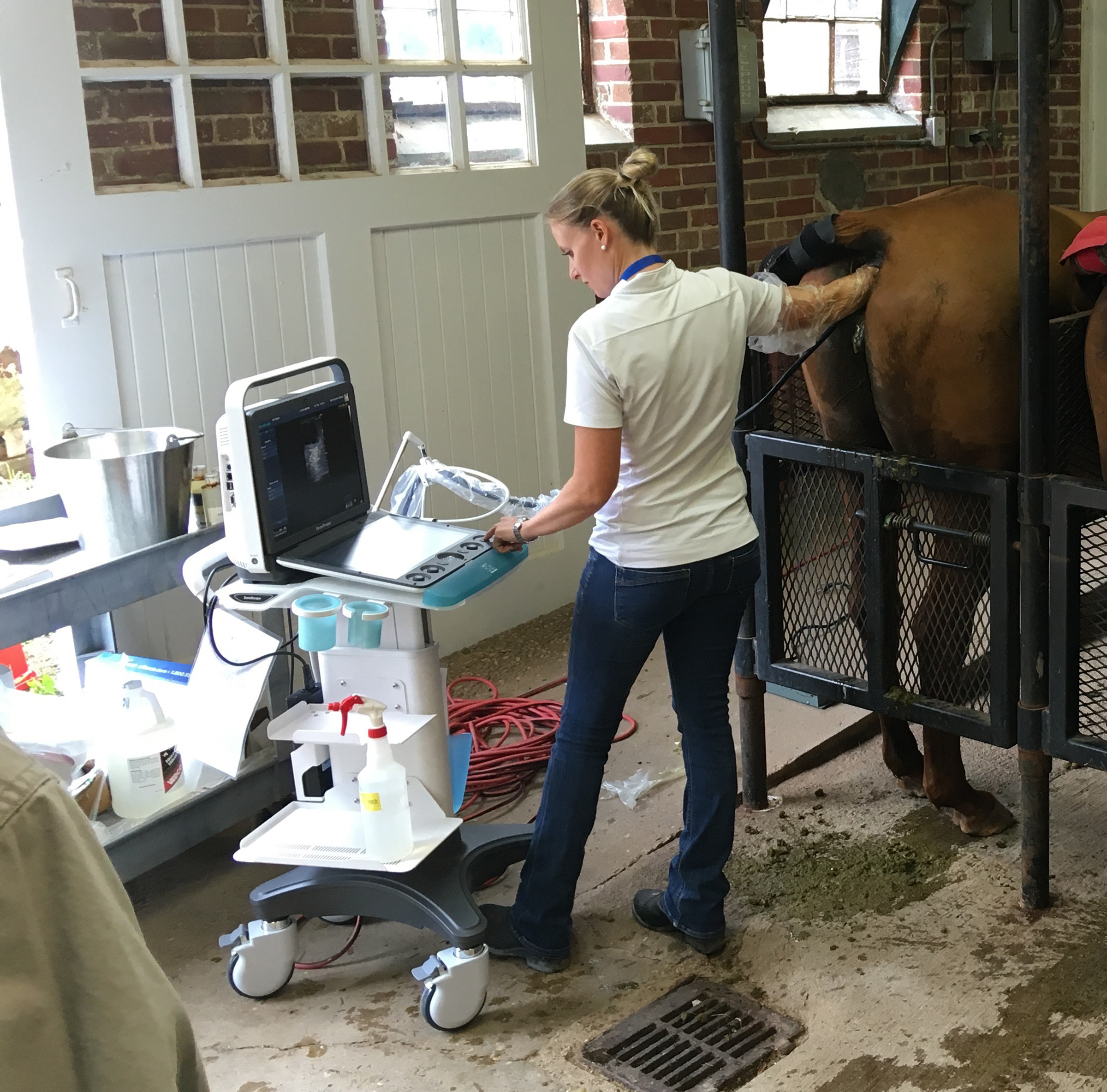
Busy competition seasons, distant locations of studs from mares, safety and hygiene—these are just a few reasons why artificial insemination (AI) is a standard breeding technique for horses. Normally, semen is deposited directly into the uterine body (conventional AI or CAI) using a dose of 500 x 10 progressively motile spermatozoa (PMS). A Brazilian study examined the difference between using this dose of PMS into the uterine body compared to half this number of sperm via deep intrauterine AI (DAI).
Insemination was performed 24 hours after a dose of deslorelin acetate and when uterine edema was Grade 2 or 3 and the cervical opening Grade 3 [Camargo, C. E.; Macan ,R.;, Munhoz, M. L.; Kozicki, L. E.; Ollhoff, R. D.; Saporski Segui, M.; Talini, R.; Weiss, R. R.; Gomes Steinberg-Galan, T.; Simioni Felicio, L. C. (2018) Effect of different types of artificial insemination and semen dose on reproductive efficiency in mares. Pferdeheilkunde 34, 57-60].
To accomplish the DAI technique, once through the cervix, the AI catheter was guided via transrectal palpation to the apex of the uterine horn of the ovary containing a pre-ovulatory follicle of at least 33 mm diameter. Not only does this technique enable a reduction in semen dose used, but there is also evidence that DAI is able to reduce post-insemination endometritis.
Spanning two breeding seasons, 13 mares were used in the study over the course of 74 estrous cycles to determine embryo recovery rates using two different insemination techniques:
- CAI deposited 500 x 10 PMS in the uterine body in 38 estrous cycles
- DAI deposition 250 x 10 PMS in the apex of the uterine horn in 36 estrous cycles
Embryo recovery was performed via uterine lavage on Day 8 after AI. There were no significant differences in embryo recovery rates between the two insemination techniques: 68.4% for CAI and 66.6% for DAI. The study concluded: “The semen deposition site (CAI or DAI) and the concentration do not affect the fertility rates but CAI is easier and faster to perform. However, when the availability of semen is restricted, DAI should be used because it is efficient even at low doses of PMS and allows for insemination of more mares to the same stallion.”








